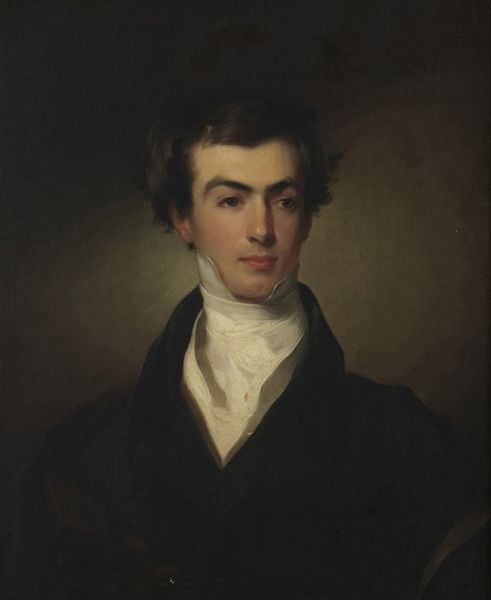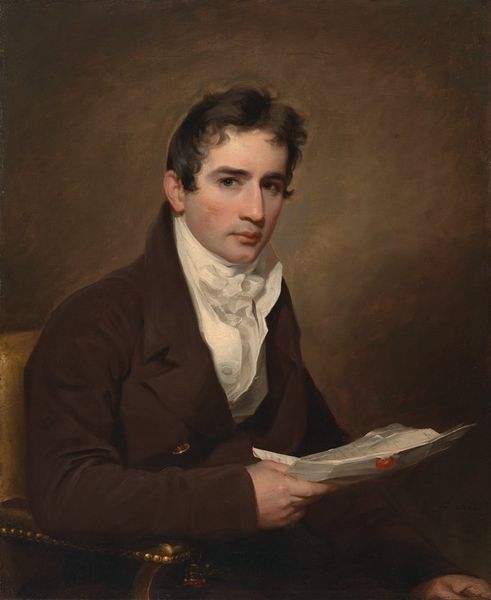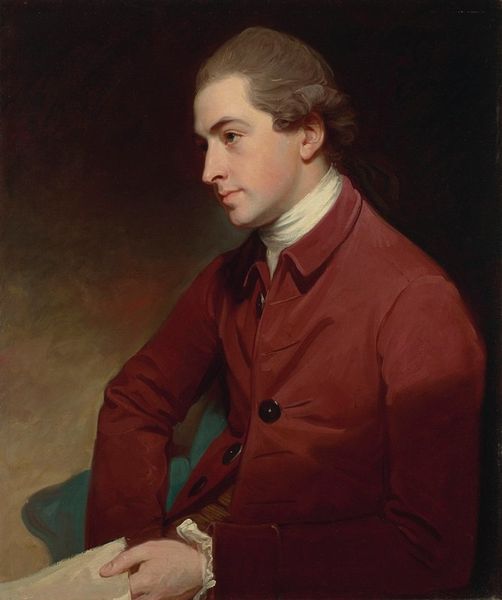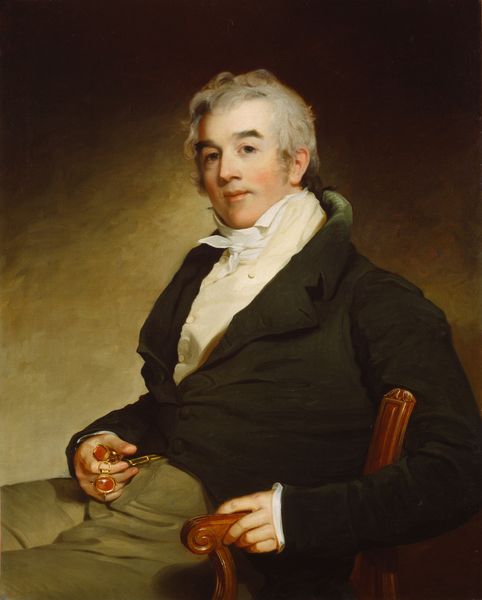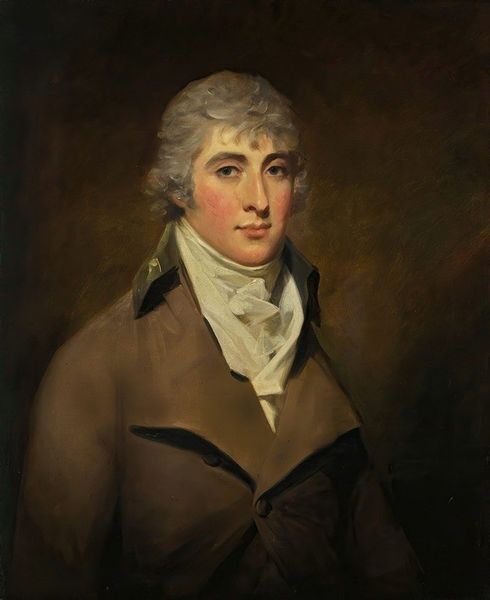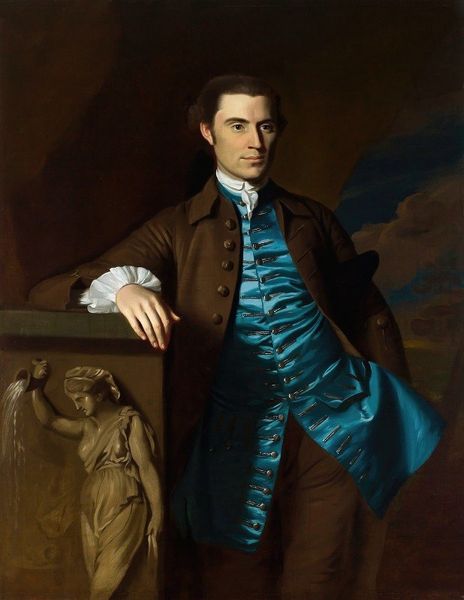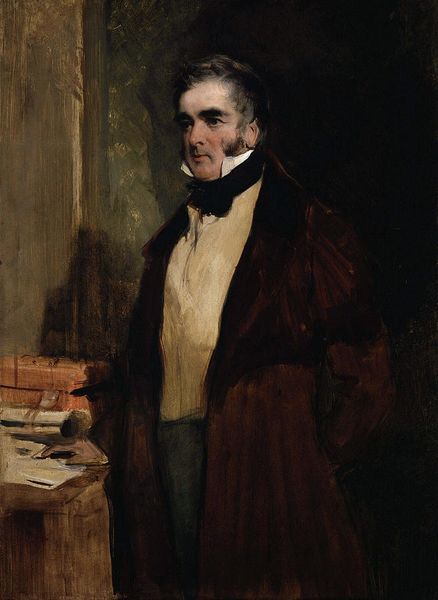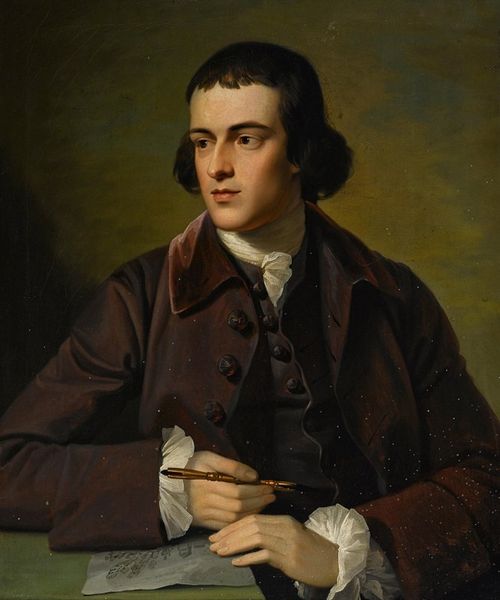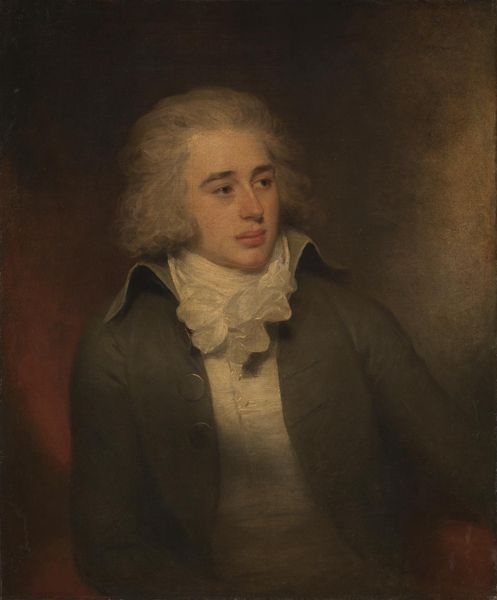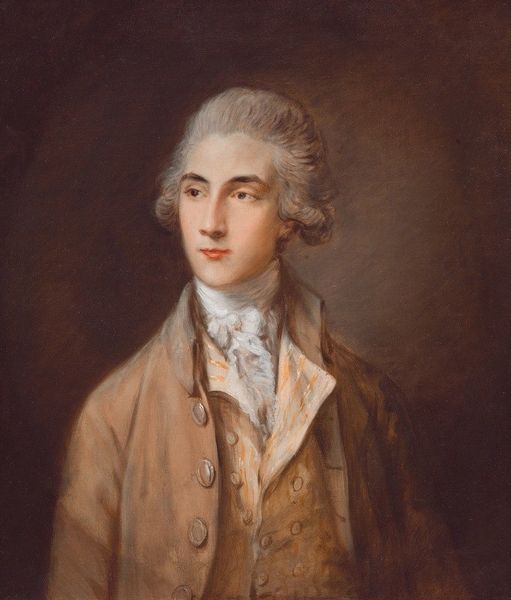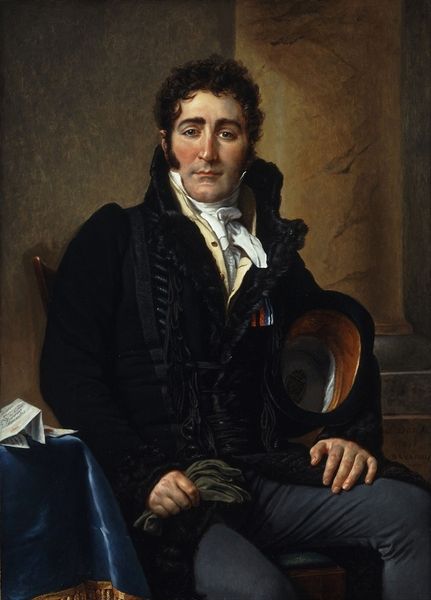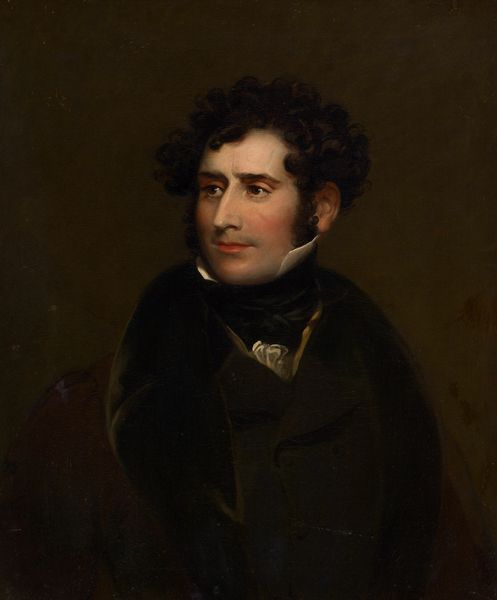
#
figurative
#
character portrait
#
low key portrait
#
portrait subject
#
portrait reference
#
edgy portrait
#
portrait art
#
portrait character photography
#
fine art portrait
#
self portrait
#
celebrity portrait
Copyright: Public Domain: Artvee
Editor: Here we have Thomas Sully’s portrait of Daniel La Motte. Its muted tones and almost theatrical lighting give it such an interesting romantic quality. What do you see in this portrait that helps us understand its place in history? Curator: This portrait really encapsulates the aspirational nature of art in the early 19th century United States. Look at how Sully positions La Motte. The somewhat ambiguous background alludes to a cultured lifestyle, with nature visible in one segment, and a grand interior hinted at behind him. Do you think this reflects reality, or a carefully constructed image? Editor: Definitely constructed. La Motte's clothing – that incredibly fussy cravat! – seems less practical and more about projecting a certain status, even if it was an affectation. Curator: Exactly! The politics of imagery are key here. Sully was crafting an image of American gentility. Portraits like these were crucial in shaping social hierarchies and solidifying cultural identity. This isn't just a likeness; it's an assertion of class and taste in a rapidly changing society. We need to remember the role art played as public relations, helping families rise and helping establish an ideal type. Editor: That’s a good point, it also raises some interesting questions about the art market at that time, who these portraits were for and the values they upheld. Curator: Absolutely. By understanding the social context, we see beyond just aesthetics and delve into the portrait's role in the theater of American society. Editor: I hadn’t really considered it in this way before, focusing more on the composition and the aesthetic qualities. This gives me a whole new appreciation for portraiture. Curator: It shows us the power of art to build, reflect, and sometimes distort reality.
Comments
No comments
Be the first to comment and join the conversation on the ultimate creative platform.
